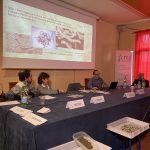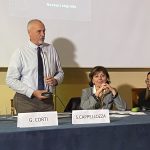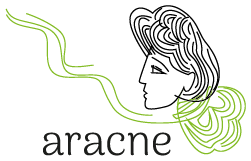One hundred years ago, the foundation stone of the new headquarters of the Experiment Sericulture Station, today the Sericulture Laboratory of the Research Centre for Agriculture and Environment of CREA, was laid.
On November 27th, 2023, in the “Malaysia” Hall of the Museum Esapolis in Padua, the Sericulture Laboratory of the Research Centre for Agriculture and Environment of CREA organised a conference titled 100 years of Italian silk: the Sericulture Station of Padua celebrates a century to honour the occasion.
In 1923 the Sericulture Station, located in the centre of Padua since 1871, the year of its foundation, was moved to its present location. Created to respond to the need to spread healthy eggs of silkworms, following the epidemic of pebrine in Europe, it has gone through the crises that have affected the sericulture, reemerging with renewed vigour. It was initially equipped with limited staff and scarce funds, but was led by an extraordinary director and eminent scientist, Enrico Verson, for about fifty years. Survived the two world wars that ended an era and a type of agriculture in which sericulture was a fundamental sector for exports, it was back to be brilliantly led in the 1980s, by Glauco Reali. During that period, large projects for revitalization and mechanization spread, then stifled by China’s silk dumping and environmental pollution problems. From the 1990s to 2008 it rose from the ashes, investing in a multi-factorial renovation project, strongly wanted by the institutions of the city of Padua, which led to the birth of the Museum Esapolis and the restoration of the current headquarters of the CREA, become efficient, modern and energetically autonomous.
The work of generations of technicians and researchers working in it has been finally rewarded in the last twenty years by a renewed interest in silk as a biomaterial and textile fiber and for mulberry as a multifunctional plant in a circular economy perspective and by a growing commitment from the institutions and the business world for the reconstruction and the revival of an Italian silk chain, with Veneto taking a leadership position among other regions. In conclusion, these first 100 years are celebrated in a climate of great confidence for the future of the silkworm rearing and silk made in Italy.
During the day, several speakers examined various aspects of research and activities that are part of the world of sericulture.
The conference was divided into three thematic sections (Past history, Current research and Trends of development), one of them being focused on the Future of sericulture from a European perspective, and showcasing some of the Aracne Project‘s initiatives:
- The Aracne project: the European Silk Route map and schools
Diana Mantegazza, Technologist, CREA AA - The Mulberry app and the database
Gianni Fila, Senjor Researcher, CREA AA - Building of a phylogenetic tree on the Silk Route
Marco Pietrella, Researcher CREA OFA - The reeling plant in a Palladian villa
Giampietro Zonta, D’Orica B CORP - The traditional rural landscape: the vineyards associated to mulberry trees: to analyse the tradition to recreate a landscape unit
Massimo Gardiman, Research Manager CREA VE
Here the clip from the conference in the Italian original language. Automatic subtitles in English are available.
The entire conference was broadcast in a long live streaming that is available on the Youtube channel CREA – Ricerca da vedere in the Italian original language. You can watch it by clicking the following button





